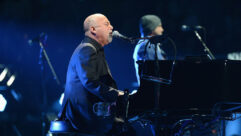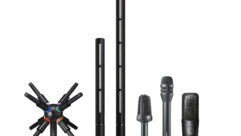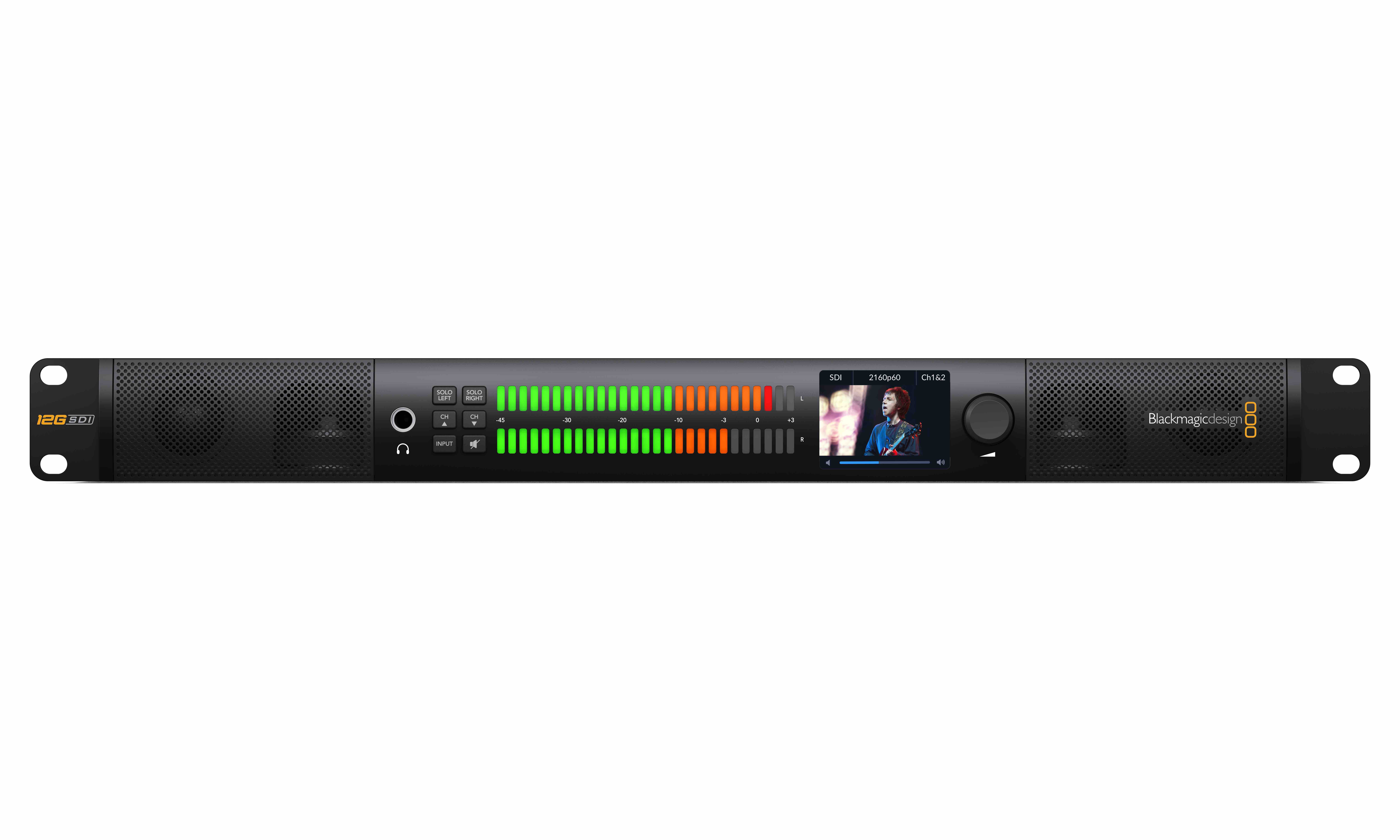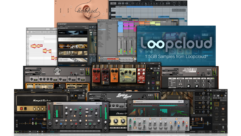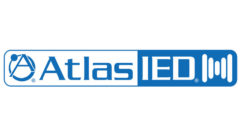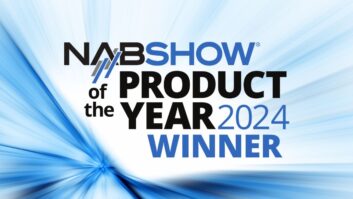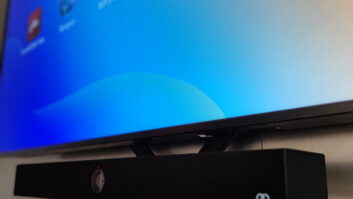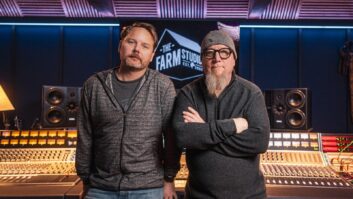
Audio for New NY Night Club, Part 2
Oct 23, 2012 10:47 AM,
With Bennett Liles
Listen to the Podcasts
Editor’s note: For your convenience, this transcription of the podcast includes timestamps. If you are listening to the podcast and reading its accompanying transcription, you can use the timestamps to jump to any part of the audio podcast by simply dragging the slider on the podcast to the time indicated in the transcription.
Broadway producers got together to lay out a night spot just for their crowd and set up for a variety of visiting performers and top entertainers. They got Masque Sound to install the perfect sound system at Broadway night spot 54 Below. Matthew Peskie is back to wrap up the details on the project, coming up right now on the SVC Podcast.
SVC: Matt, thanks for being back for part two on the SVC Podcast with the sound installation at the new Broadway nightclub 54 Below, located right under where the old Studio 54 club was. [This is] a new installation. You got in while the actual construction was going on. We didn’t get too much into where the sound control is located in there. A very distributed system and where do they control it?
It is kind of twofold. You have the traditional mix booth, which is off the system left side, off in the corner a little bit. You’re still in a great place to hear and to put up a mix. That’s where the ST48 is and there’s also a BLU-10 remote located there. The entire system with the exception of the Meyer Galileo, which drives the Meyer system is controlled by BSS processors. So we have two locations for the remotes that run the BSS processors. There is one located in the booth and then one located behind the bar. So not only does the mix person, whoever’s mixing the show, have control over levels in regards to any of the ancillary zones whether it be the bathrooms or the bar or the entryway, any of those places, but the bartender also has that control so the bartender can go ahead and bring his zone down if he deems necessary. If it’s quiet up there or if it’s too loud, what have you, he’s got that control. And also we incorporated an iPod dock in the bartender area so he can put an iPod in and via the BLU-10 remote, he can cycle the iPod up, which is going to distribute that sound throughout the venue through the main PA as well. Through the Galileo it’s going to come out of the main PA for when there’s no show going on and then when the show’s about to begin, you can do this from either the bar area or from the control booth, you just go ahead and hit iPod fade out. And then that’s going to fade that iPod out and it’s going to fade it down to infinity basically muting the channels then while the show goes on, and then the show will go ahead and fill in and then take over all the speaker zones. So it ultimately ended up being a very turnkey system in regards to zone control and having this playback music. [Timestamp: 2:58]
And how did the bartenders take to that? They pick up on that pretty fast?
Well, we really made it as simple as possible where for the most part all the zones are pretty set and we put limits on so even if the person really wants to crank it up in the bar area, there’s a limit as to how loud they can make it go. So in regards to the iPod fade up and down, which is really the only thing that they really have to worry about, we simply just put in where you have to enter in a password, so that way only certain people are able to do it. So you simply go to the page for the iPod fade up/fade down, enter the password, and then just hit iPod fade up or fade down and it’s that simple. [Timestamp: 3:36]
And you do have a digital mixing console in there. Why did you decide to use the Avid SC-48?
Well, I think Peter Hylenski spec’ed the SC-48 and I think I probably would have chosen something very similar. I mean for the price range, it’s right where we want it to be and in regards to the flexibility that you have with adding plugins. I know they put in a Waves package into the console and then the ease of operating the desk. I’ve travelled with profiles in the past in my past life of touring and I always had a great time with them. I never had any major issues, so the reliability and then also the factor that you can very simply run ProTools straight out of the desk and record and that was probably one of the primary reasons which I know we were going to discuss the recording facts—how they record down at the venue and they do use the JoeCo 24 track recorder as their primary record source but then they also always run ProTools via the SC-48 as a backup. So it’s just a nice thing to have and then you can go ahead and turn it around and run it in the playback mode and do your virtual sound check. [Timestamp: 4:43]
Yeah, that always makes it great to be able to work around other people’s schedules in getting things ready.
Yeah, absolutely, absolutely.
Audio for New NY Night Club, Part 2
Oct 23, 2012 10:47 AM,
With Bennett Liles
Where did you end up putting the Millennia preamps? It doesn’t sound like you had any really long mic cable runs.
No, yeah, I would say the cable runs are probably only maybe 45-50ft. from the stage to FOH. It’s a really short run. The Millennia’s are out at FOH and basically the patchable inputs onstage hit the Millenia’s first and then the Millenia’s analog out feeds into the SC-48, and then we take the digital out on the AES card that comes out of the Millennia’s into the JoeCo recorder. So really the Millenia’s are your front-end head preamp, so we’re typically not using the preamps at all on the SC-48. It’s really the Millenia’s are driving everything. [Timestamp: 5:30]
OK, so you’re going to recording before it even gets to the front of the house.
Yeah, before it even hits the console. Yeah it goes straight from the preamp right into the JoeCo. [Timestamp: 5:38]
Being that it serves a Broadway crowd you probably have a huge variety of acts coming in there. Do any of them seem to have a need for any type of extensive stage monitoring?
I think it’s been relatively small. Patti LuPone has been in and I know she had quite a few things happening on stage but yeah, in regards to stage monitoring there really isn’t a ton going on. They have a couple of small Meyer UPM-XP wedges that are, again, they’re powered just like the UP-4XPs; those are powered from the rack-mount power supply. And then I think the only other stage monitors they have, I think, they’ve picked up about a half dozen of the Anchors, just the little self powered anchored speakers that you can stick on to a mic stand. It’s really for the size of acts that they have coming in there you know smaller act; we have a piano player, have a guitar player, someone typically is probably going to be sitting down, so the little Anchor speaker really covers and takes care of things just fine. [Timestamp: 6:32]
Oh, that makes it easier.
Yeah, oh absolutely, absolutely.
Especially if you have to shift things around between acts pretty fast.
And the fact that the stage is so small anyway, so to have a bunch of floor wedges that you have to try to get up there and then you have to position it in a location where you actually are going to be able to hear it. So really going with the little self-powered speakers is really the right way to go. [Timestamp: 6:52]
Do they do any sort of live broadcasting out of 54 Below?
I don’t believe so. They were initially going to put in some panels out in the facility to do broadcasting and that ended up getting put on hold for the time being. I know the electrician put in the infrastructure, so the infrastructure is there or the conduit is there if they do ever want to go back and put some wire in and get these locations set to go but they very well could. I mean they could very well do that from the audio side at least they could no problem. [Timestamp: 7:21]
And when they got all this set up and you were ready to go with it, you had the first few acts come in. Did you have to go back and make any changes or adjustments to anything? Were you there when they sort of gave the place its test flight?
Yeah I was there the night before they opened. The only real changes that we had to do were just some minor changes in some of the zone levels, but for the most part once the show feed was basically fed from FOH, where there’s a couple different show feeds, so there are locations where you come walking into the venue and you walk down the stairs, there’s a couple zones—a couple ceiling speaker zones—that they don’t get a board mix; they actually get—there’s three room mics set up—they actually get a feed of those room mics. Because the room is so small you are occasionally going to have acts that, even with the piano that they have there, a lot of times it might just be in the PA just barely, so a lot things that you’re hearing in the room you’re actually hearing acoustically. So it’s important that they wanted that feel; they wanted that full feel to go to these other zones when you’re actually not in the main performance space. So really the only way to do it was to use those room mics and then pipe those room mics into those particular zones, which gives it that full room sound not only do you get the crowd, but you get everything that’s not really amplified that you would normally hear acoustically. [Timestamp: 8:38]
Well, the place is right at entertainment ground zero, so it’s the place to be and every kind of performer imaginable coming in and an incredibly fun place to work in. So what’s coming up next for Masque Sound? You got anything coming up that you can let us in on?
Yeah, we do. We’re working on a project now at the Brooklyn Tech High School here in Brooklyn and I believe it’s their largest, I think it’s the largest, high school in the United States. They have a really large auditorium. I think it’s around 3,500-4,000 seats. It’s a really big space that they’ve never really had an adequate PA in there, so we’re working with the designer, putting in a large d&b system. It’s going to go in there. That’s primarily made up of Q1 speakers and then a plethora of fill speakers, under balcony and over balcony. So it’s a large system, a total of pushing upwards of 60 speakers going into that venue. So that’s a big one that we’re in the midst of right now. [Timestamp: 9:30]
Well, that will keep things interesting especially coming off of this one. Matt Peskie from Masque Sound and the sound system at Broadway night spot 54 Below. Thanks for telling us about it and good luck with those coming up.
You got it. Thank you.


